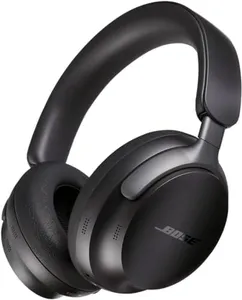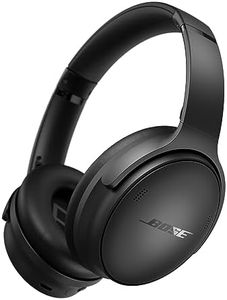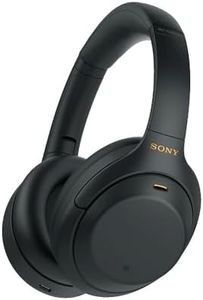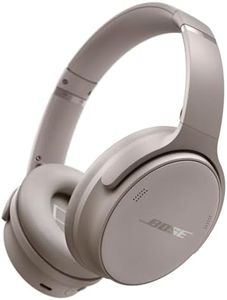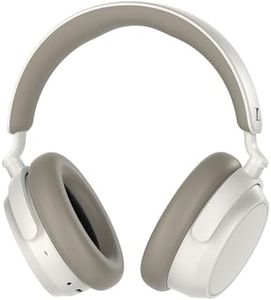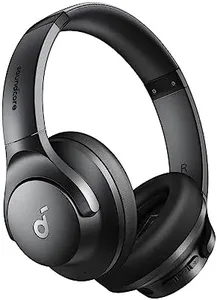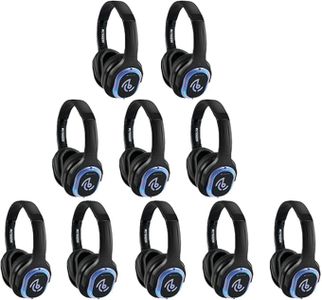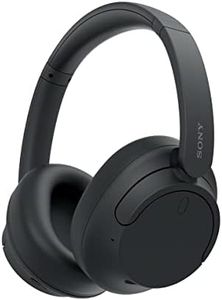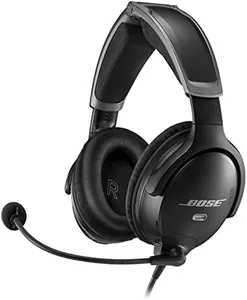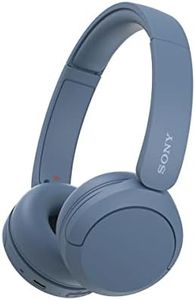We Use CookiesWe use cookies to enhance the security, performance,
functionality and for analytical and promotional activities. By continuing to browse this site you
are agreeing to our privacy policy
10 Best Silent Headphones
From leading brands and best sellers available on the web.Buying Guide for the Best Silent Headphones
Choosing the right headphones for silence—often called noise-cancelling headphones—requires understanding what makes them effective and comfortable for your needs. The best fit for you will depend not just on how well they block out unwanted sound, but also on how they feel during long use, battery life, how you plan to use them, and any additional features you might need for specific situations like travel, office, or home use.Noise Cancellation TypeNoise cancellation in headphones usually comes in two main types: active and passive. Passive noise isolation relies on the design and materials of the headphones to physically block outside noise, while active noise cancellation (ANC) uses electronic processing to counteract external sounds. Active is great for constant, low-frequency noises like airplane engines, while passive works better for sudden, high-frequency sounds. If you want maximum quiet in noisy environments, look for active noise-cancelling headphones; if you just want some reduction in quieter places or prefer lighter headphones, passive might be enough.
Sound QualitySound quality covers how clear, balanced, and rich the audio is. Some headphones prioritize heavy bass, while others offer clearer vocals or a more neutral balance for all types of music. If you enjoy music, podcasts, or videos, try out different sound signatures and pick the one that matches your listening preferences; if you just need silence and clear calls, overall balance is more important.
Comfort and FitComfort depends on factors like ear cup size, padding, weight, and headband flexibility. Over-ear headphones generally provide more comfort and noise isolation, while on-ear or in-ear designs are lighter and more portable. If you plan long listening sessions or travel often, prioritize plush, roomy designs that don't squeeze your ears. Try wearing them, if possible, to ensure they don’t cause fatigue or soreness.
Battery LifeBattery life determines how long headphones work between charges, especially important for wireless and noise-cancelling models. Some run for only a few hours on noise cancelling mode, while others can last all day or longer. Think about your usage: daily commutes, work sessions, or long travels need longer battery life; occasional use or short listening sessions can do with less.
Control FeaturesControl features include buttons or touchpads to adjust volume, skip tracks, toggle noise cancellation, or activate voice assistants. Some headphones have easy-to-find physical buttons, while others use touch controls or gestures. Choose what feels more intuitive and reliable for you—especially if you’ll use them while moving or working.
Connectivity and CompatibilityConnectivity refers to whether the headphones use Bluetooth, wired connections, or both, and compatibility with your devices. Some offer multipoint connections to switch between devices easily. If you switch devices often or use them with both phone and laptop, check for these features. Wired options can be more reliable for certain uses, like flights or gaming.
Portability and FoldabilityPortability is about how easy it is to carry and store your headphones. Some models fold up or come with carrying cases, which is handy if you travel or commute. If you plan to mostly use them at home or work, this is less crucial, but if you’re always on the go, look for headphones that collapse and fit snugly into a bag.
